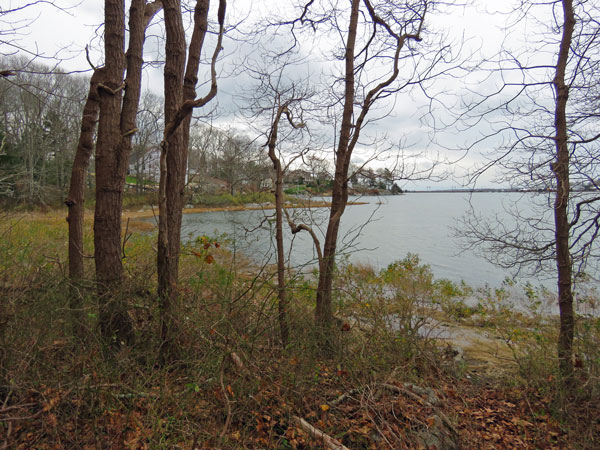
Because of the winter storms we hadn’t had a real walk in the woods in over a month. “Get out there!” my favorite TV weatherman advised on Wednesday morning. We opened the door and the birds were singing and it felt like a spring day at 45°F (7°C). Most of the snow had melted. So we headed out to a new park for us, the Hewitt Farm in North Stonington.

This 104-acre park and recreation area was purchased by the Town of North Stonington in 2008 for the enjoyment of its residents and visitors to the region. The property consists of forests, fields, wetlands and streams; more than a mile of hiking trails, including the town’s Bicentennial Trail; the Shunock River; 3.5-acre Lower Hewitt Pond and dam; and several structures. The dam originally provided water-power to John Dean Gallup’s woolen mill located nearby.
~ Hewitt Farm Trail Map

We took the Bicentennial Trail. It felt so good to be outside with a just a sweatshirt and no gloves needed! We walked for an hour and a half, up a hill to Tipping Rock, a huge glacier erratic that didn’t disappoint. From the top of the hill we could see the wooded landscape 360° all around us. But there was also lots to see along the way.




For most of us knowledge comes largely through sight, yet we look about with such unseeing eyes that we are partially blind. One way to open your eyes is to ask yourself, “What if I had never seen this before? What if I knew I would never see it again?”
~ Rachel Carson
(The Sense of Wonder)


Not sure how long the trail would be we were thinking of turning back but then we saw the sign. So we pressed on up the hill…





After much oohing and aahing we headed back down the hill. It was a lot easier and faster than climbing up, but we still paused to see a lot of nature’s delights.



About half way down we heard the delighful sounds of excited children approaching. Two mothers with two babies and four little ones between them were coming up the trail so we took our usual six-feet-off-the-trail position as they passed. We exchanged pleasant greetings. They were wondering about the ladder…

We were so happy to be out and about, as much as is possible, during the pandemic. Tim got his first shot on the 17th. Next one scheduled for March 17. My age group opens up on Monday but it may take a while to get an appointment because there are a lot more people in my age group than there are in Tim’s.























































































































































